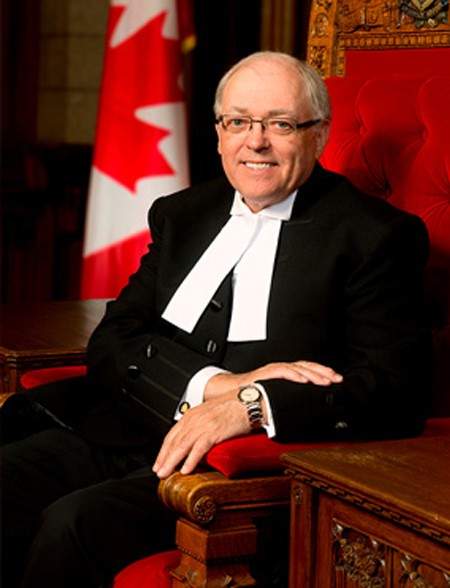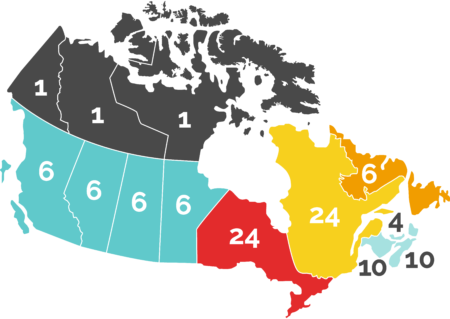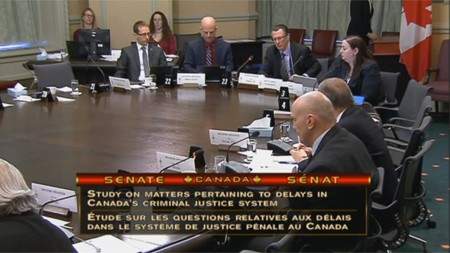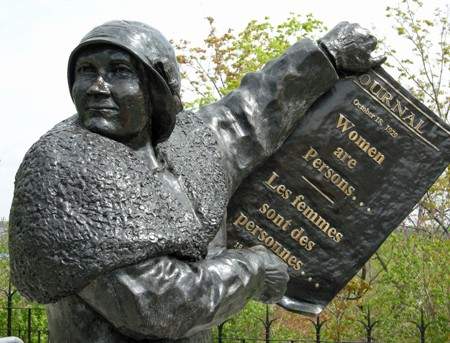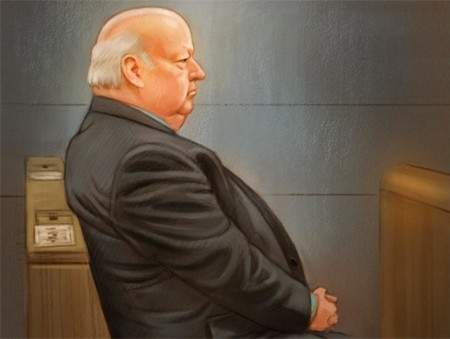No
The Senate of Canada
In the previous chapter, we looked at the Canadian House of Commons and the central role it plays in Canada’s parliamentary system. Though the House is the most important part of Canada’s parliament, there is also a second chamber of parliament known as the Senate of Canada. After the House of Commons passes a bill, it must also pass a vote in the Senate before it becomes law.
By far the most controversial institution in the Canadian system of government, the Canadian Senate has very few supporters. Modeled after Britain’s House of Lords, it was originally supposed to allow representatives of Canada’s wealthy elite to veto legislation passed by politicians representing the common people — an idea that has not aged particularly well. It’s thus hard to talk about the Senate in modern Canada without also mentioning either the word “reform” or “abolishment,” but neither has been seriously attempted to date.
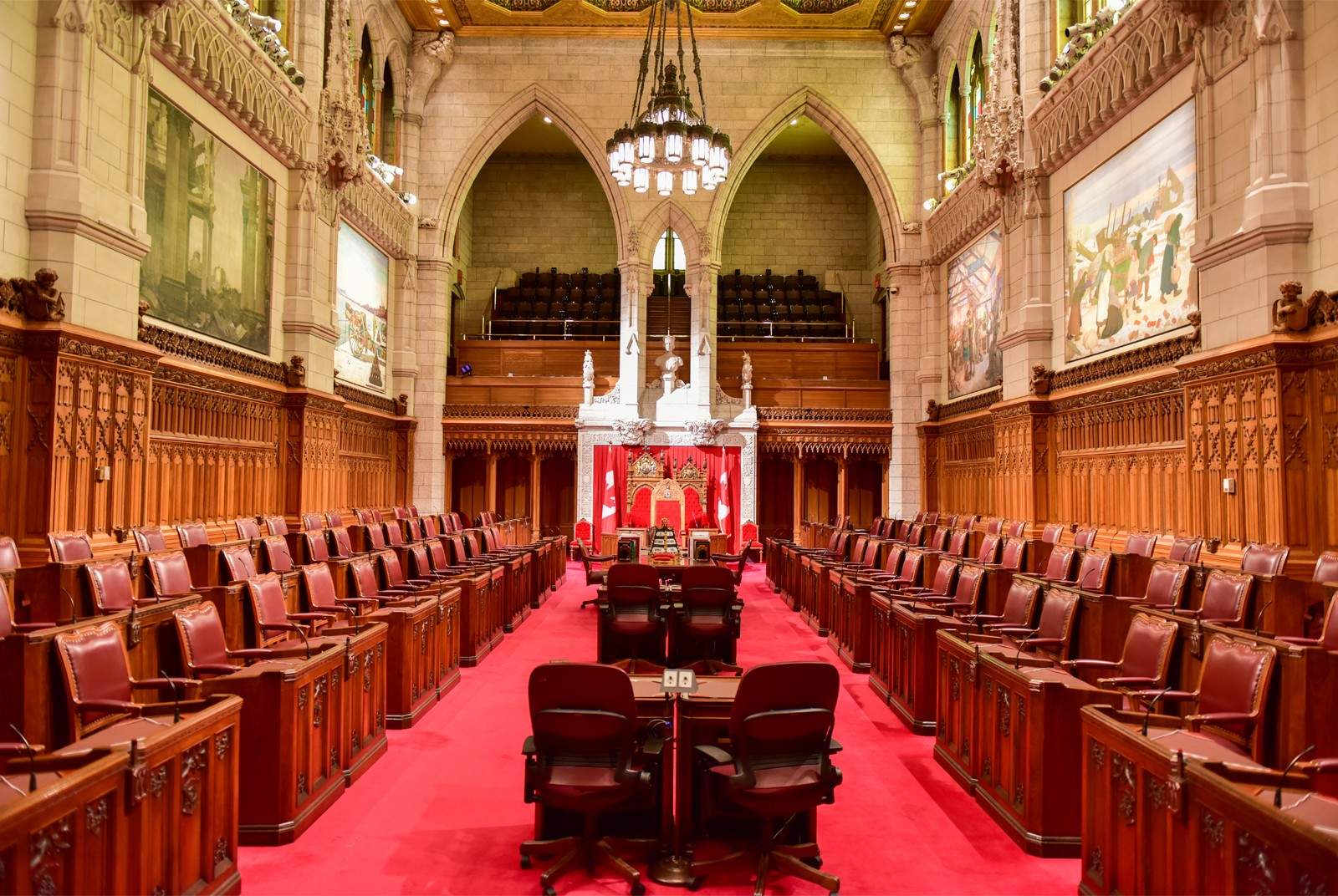
The chamber of the Senate of Canada.
Felix Lipov/Shutterstock
What is the Senate of Canada?
Canada’s Senate consists of 105 politicians, known as senators, who have been appointed by various Canadian prime ministers. They used to serve for life, but in 1965, this was changed to merely make their terms last until their 75th birthday (though the last life-term senator did not retire until 1999). Senators can’t be fired by the PM, but the Senate can vote to remove members from office if they are found guilty of committing what the Constitution describes as an “infamous crime” (this has never been done to date).
Whenever a senator dies, resigns, is removed, or reaches the age limit, the sitting prime minister of Canada gets to appoint a replacement, meaning at any given time the Senate is a hodge-podge of various appointments dating back several different prime ministerial administrations. It should go without saying that prime ministers always appoint senators from their own political party.
Who are Senators?
The original purpose of the Senate was to provide an elite veto on potentially harmful legislation passed by the democratically-elected House of Commons, in the same way the hereditary aristocrats of the British House of Lords would often veto legislation passed by the elected House of Commons of their country. At the time the Canadian Constitution was written, there was still relatively high levels of distrust for democracy within the Canadian political establishment, and it was considered important for there to be some level of government that could overrule what were assumed to be the occasionally dumb or dangerous ideas of politicians elected by poor or uneducated voters.
Unlike Britain, however, Canada lacked an aristocracy, so the Senate quickly became a hotbed of patronage — a place where prime ministers could stick friends and allies as a reward for loyal service. This is still largely the case today. Most men and women who get appointed to the Senate tend to be career politicians from the prime minister’s party who have recently retired, such as cabinet ministers, mayors, premiers and, in some cases, even fundraisers or staffers. By law, senators are required to be property owners in the province they represent.
As the Senate becomes more and more politically controversial, a growing number of senators are now often appointed from outside the world of politics, with an increased focus on appointing “accomplished Canadians” who have achieved some level of success in science, education, journalism, sports or art. Reflecting a combination of the Senate’s unpopularity and its limited power, Canadian senators tend to have very low profiles, and the average Canadian would probably be hard-pressed to name a single sitting senator.
Seats in the Senate
Like the House of Commons, the Senate’s seats are divided up between the various provinces, but the Senate uses a weird system to decide how many senators each province gets. The weirdness of this system is one of the reasons why the Senate is so controversial.
Officially, Senate seats are said to be allocated on the basis of regional equality, with Ontario counted as one “region,” Quebec counted as a second “region,” three Atlantic provinces counted as a third “region,” and British Columbia and the three Prairie provinces of Alberta, Saskatchewan, and Manitoba, counted as a fourth “region.” Each region gets 24 senators each. This does not explain the six Senate seats given to the Atlantic province of Newfoundland and Labrador, however, nor the three seats given to Canada’s three northern territories. Likewise, these “regions” are quite arbitrarily defined, without any consistent geographic or political logic. In reality, the allocation of Senate seats has more to do with the order different provinces joined Canada, and how large and powerful they were at the time. So the original four provinces of Canada, Ontario, Quebec, Nova Scotia, and New Brunswick, all have quite a lot of seats, while the six “newer” provinces, which were initially very sparsely-populated and politically powerless, have less.
Here is the complete breakdown of Senate seats, along with party standings. This list is accurate as of May, 2019:
The Senate party system is a bit odd and complicated right now thanks to Prime Minister Justin Trudeau (b. 1971) and his still-in-progress reforms to remove “partisanship” from the Senate. In 2014 Trudeau expelled all Liberal senators from the Liberal Senate caucus (the official group of the party’s politicians) and most started identifying as independents, though some continue to identify as Liberals, defying Trudeau. In 2016 several of the formerly Liberal independent senators created the Independent Senate Group (ISG), which is now recognized by the Senate rules as something with basically the same rights as a political party. Not all independent senators belong to the ISG, however. In 2019, all the remaining Liberal senators declared they will now simply identify as “Progressives.”
Here is the breakdown of Senate seats based on which prime minister appointed them. It should be noted that most independent or ISG senators were not originally appointed as such, but rather left their original party at some point during their Senate career. This list is accurate as of May, 2019.
(2015- )
(2006-2015)
(2003-2006)
(1993-2003)
(1984-1993)
What does the Senate of Canada do?
The Senate’s official purpose is to approve all bills that pass the House of Commons before they become law. In practice, however, the Senate is known as being a bit of a “rubber stamp” that automatically agrees with everything the House wants. Since the Senate is not elected, it’s become very controversial for the Senate to veto the decisions of the democratically-chosen House of Commons, so most of the time they don’t bother. Only in the rare cases where the Senate is controlled by a different party than the House, and there is a very, very controversial piece of legislation before them, would rejection of a bill even be considered. A more common, moderate compromise is for the Senate to suggest amendments, or changes, to a House bill that may or may not be followed.
"Parliamentary protocol is clear. Senators can’t — and shouldn’t — vote down government bills they dislike, simply because of differences of ideology or politics. It’s not our job to block the democratic will of the electorate."
Senator Paula Simons, 2019
These days, senators are best known for busying themselves with hearings, committees and reports, in which they investigate matters, conduct research, and give advice to other levels of government. Since they are not very actively involved in the day-to-day business of governing the country, senators have a lot of freedom to study topics they consider interesting or important but may be going ignored in mainstream politics. Long and thorough Senate reports on complicated, challenging, or politically unpopular topics are common Senate output, and are generally well-respected.
It would be fair to describe the Senate as a fairly insecure body. As one Canadian writer put it, the most common speech heard in the Senate is “why the Senate is important.” A lot of Senate work thus revolves around ensuring the institution maintains a positive, respectable image in the minds of Canadians, to counter the flurry of anti-Senate rhetoric that tends to dominate the rest of Canadian life.
Debate Over the Senate in Canada
In the 1980s, the Senate’s unpopularity reached a peak, and it became mainstream for Canadian politicians to openly advocate reforming or abolishing the institution. The main complaints have always been fairly straightforward. Many Canadians believe the Senate is grossly undemocratic and elitist, and just as many have a problem with the Senate’s arbitrary way of allocating seats. Senate reform has always been a somewhat scattered cause, however, and though leaving the Senate as-is generally polls extremely poorly, there is no unified consensus on what should be done to improve things.
For a time, one popular reform idea was the so-called “Triple-E Senate” plan: Senators should be elected by voters and each province should have an equal number of Senate seats, making the body far more effective as a result. The main difficulty with this proposal is the extreme disparity between the sizes of Canada’s provinces. The country’s two smallest Maritime provinces, Prince Edward Island and Newfoundland, have populations under 600,000 and are more than 10 times smaller than Ontario and Quebec, which have over seven million residents each. The large provinces would thus have to sacrifice a great deal of their own power to make Triple-E work. The province of Alberta is the only part of Canada where Senate elections were regularly held, but in 2015 these were ruled unconstitutional by the Supreme Court of Canada, on the grounds that Canada’s founders never intended the Senate to be an elected body.
The other leading proposal is for the Senate to be abolished outright, which is a position that tends to be favoured by Canadian progressives, particularly those in the New Democratic Party. While this is certainly a simple solution, it’s also been accused of being too radical. Few modern democracies have only one chamber of parliament, and some worry that getting rid of the Senate altogether would simply consolidate more power in the hands of the House of Commons and the prime minister — both of which are already quite powerful to begin with. In any case, the Canadian Supreme Court has now made clear that substantial Senate reform will require a constitutional amendment, and as we discuss in more detail in the Constitution chapter, passing constitutional amendments in Canada is a notoriously complicated and difficult task.
